 |
|
World War II provided both pretext and cover
to new programs for killing “undesirables” regarded as burdens on national resources. Using arguments advanced by some physicians and jurists in the 1920s, the Nazis justified murder in the name of euthanasia—“mercy death”—and enlisted hundreds of asylum directors, pediatricians, psychiatrists, family doctors, and nurses. Many of those who had earlier rejected euthanasia as a eugenics measure came to support murder “for the good of the Fatherland.”
The first victims were German infants and children.
The Reich Ministry of the Interior instructed midwives and physicians to register all children born with severe birth defects. Three expert physicians evaluated each case and, usually without seeing the potential victims, selected those to be killed. Officials deceived the children’s families by providing falsified causes of death. From 1939 to 1945, more than 5,000 boys and girls were killed in some 30 special children’s wards established at selected hospitals and clinics.
|
 |
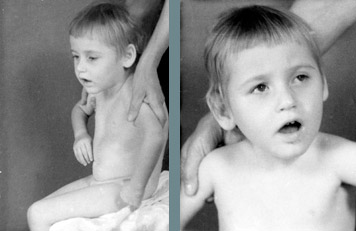 |
|
Edith F. was a victim of the children’s euthanasia program.
Wiener Stadt- und Landesarchiv/United States Holocaust Memorial Museum #UN876
|
|
|
|
|
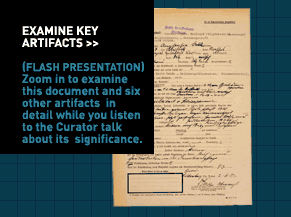
|
|
|
 |
Mass Gassings: Operation T-4
 |
In October 1939, after Hitler authorized “mercy deaths”
for patients deemed “incurable,” the murder program expanded from children to adults. Operation T-4—referring to the address of the secret program’s headquarters at Tiergartenstrasse 4, Berlin—mostly targeted adult patients in private, state, and church-run institutions. Individuals judged unproductive were particularly vulnerable. From January 1940 to August 1941, more than 70,000 men and women were transported to one of six specially staffed facilities in Germany and Austria and killed by carbon monoxide poisoning in gas chambers disguised as showers. Growing public awareness and unrest over the killings influenced Hitler to halt the gassing program. Euthanasia murders resumed in other guises; patients were killed by means of starvation diets and overdoses of medication in hospitals and mental institutions throughout the country. From 1939 to 1945, an estimated 200,000 persons were killed in the various euthanasia programs.
|
|
 |
Racial Hygiene in Occupied Poland
|
|
|
|
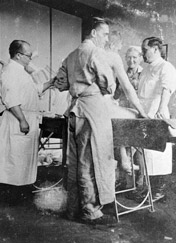 |
|
Carl Clauberg (far left), a research gynecologist, once studied treatments to help infertile women conceive. In 1943 and 1944, he conducted cruel experiments at Auschwitz on mostly Jewish prisoners in his mission to develop an efficient, inexpensive method of mass sterilization.
Instytut Pamieci Narodowej—Komisja Scigania Zbrodni przeciwko Narodowi Polskiemu, Warsaw/United States Holocaust Memorial Museum #UN433
|
 |
|
Most of these Hungarian Jews deported to Auschwitz- Birkenau in May 1944 were killed soon after their arrival in gas chambers disguised as showers.
Yad Vashem, Jerusalem/United States Holocaust Memorial Museum #UN1704
|
|
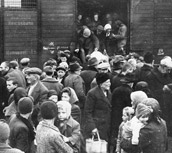 |
|
| |
|
|
|
 |
While secret euthanasia programs were under way
inside the German Reich, members of the SS, headed by Heinrich Himmler, were terrorizing or eliminating perceived biological threats in occupied Poland. Himmler, charged by Hitler with overseeing the radical restructuring of Poland along ethnic lines, sought to reduce Poland to a nation of manual laborers to serve their German “masters.” Nazi plans called for the elimination of Poland’s political and intellectual leaders through mass executions or imprisonment; the deportation of Poles, Jews, and “Gypsies” (Roma) out of areas incorporated into the Reich; colonization by resettled Germans; and the “Germanization” of racially “valuable” Poles. Hundreds of experts trained in racial hygiene helped screen tens of thousands of individuals for genetic and racial “fitness.”
|
|
|
 |
 |
Germans held Polish and other eastern Jews in special contempt, as “subhumans.”
From the fall of 1939 to the summer of 1941, the Nazis concentrated some two million Jews in towns and cities and then segregated them into marked-off sections or ghettos. Some of the push to create sealed ghettos in Warsaw and other cities came from German public health officials who falsely linked Jews to the spread of typhus and other diseases.
|
Mass Gassings of Jews
 |
Nazi racial hygiene culminated in the near-annihilation of European Jewry.
The “Final Solution to the Jewish Question” began as special squads of SS and police followed German forces into the Soviet Union and killed more than one million Jews in open-air shootings. But the psychological stress of shooting men, women, and children face-to-face led SS chief Heinrich Himmler to seek a “cleaner” and “more efficient” method of killing. He turned to the example of the euthanasia murder program, and gassing was introduced, but on a vastly larger scale.
|
|
|
|
|
 |
 |
Nearly two million people, mostly Polish Jews, were transported for murder
to Chelmno and to Sobibor, Treblinka, and Belzec (isolated SS camps in annexed and occupied Poland) where redeployed T-4 staff manned the gassing installations and crematoria. At Auschwitz-Birkenau, more than one million Jews deported from German-controlled countries perished. Nazi doctors selected “fitter” adults for forced labor, a temporary reprieve, and used both adults and children as guinea pigs in eugenic sterilization experiments and genetic research conducted at the camp.
|
|
|
|
 |
 |
After the war,
few of the biomedical experts who helped, in varying degrees, implement and legitimize Nazi racial hygiene policies were ever indicted or brought to a moral accounting of any kind for their actions. Many continued their professional careers.
|
|
|
| |
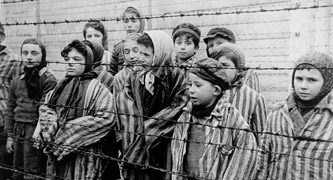
Some children survived at Auschwitz because they were twins useful in genetic research conducted by Dr. Josef Mengele at the camp.
Belorusskiy gosudarstvennyy arkhiv kinofotofonodokumentov, Dzerzhinsk/United States Holocaust Memorial Museum #UN1702
|
|
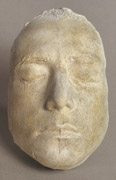
Plaster casting prepared for the study of racial types by anthropologist at the Natural History Museum in Vienna in October 1939. The 16-year-old Jewish subject, Gustav Pimselstein, survived the Holocaust.
Naturhistorisches Museum, Vienna/United States Holocaust Memorial Museum #UN1125
|
|
|
|
 |
 |
“THERE WERE IN THE MEMORY OF MANKIND GENGHIS KHANS AND EUGEN FISCHERS BUT NEVER BEFORE HAD A GENGHIS KHAN JOINED HANDS WITH AN EUGEN FISCHER.”
— MAX WEINREICH, HITLER’S PROFESSORS: THE PART OF SCHOLARSHIP IN GERMANY’S CRIMES AGAINST THE JEWISH PEOPLE,1946
|
|
|
|
 |
|
|